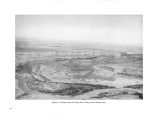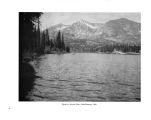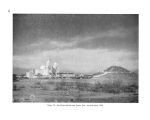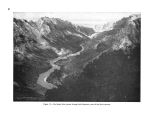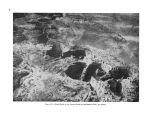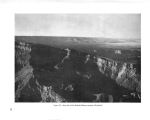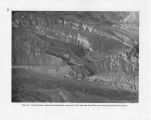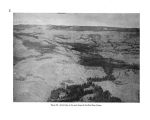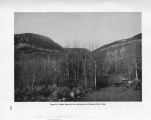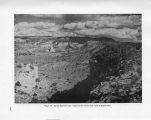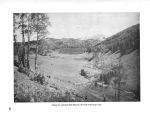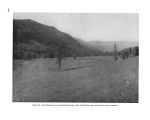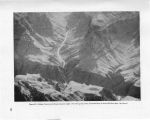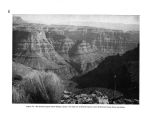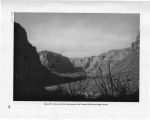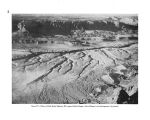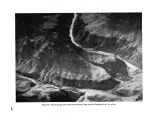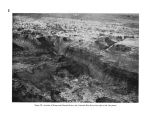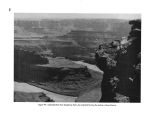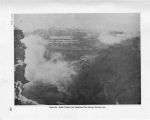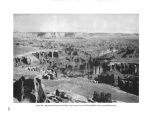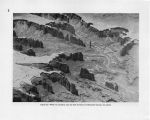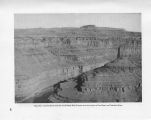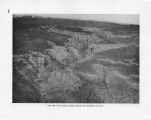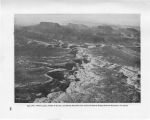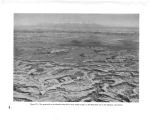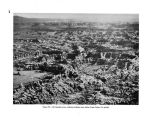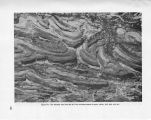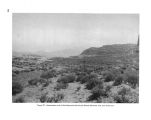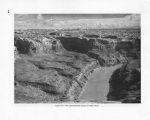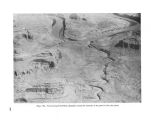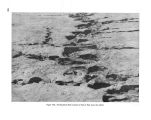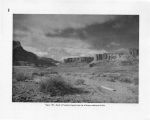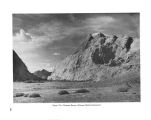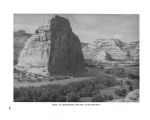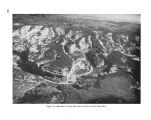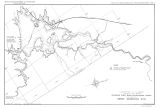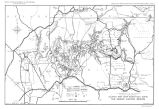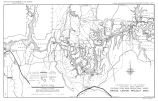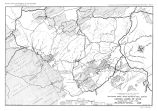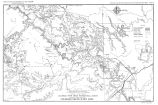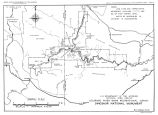| OCR Text |
Show sandstone. Rising abruptly from brightly colored surfaces are countless black spires, serrate ridges, walls, and irregular masses of basaltic rock, agglomerate, and tuff. Within four volcanic fields, or widely dispersed, about 50 volcanic necks, 100 to 700 feet high, and 60 dikes, 10 to 900 feet long, have been mapped. In places, lavas cap mesas and protrude as palisade walls. Of the two huge laccoliths, Carrizo Mountain has been stripped down to its igneous core, but Navajo Mountain retains its original cover of sandstone. Thus the present topography of the Navajo country bears little resemblance to its earlier expression. The once fairly continuous surface is represented by a bewildering array of erosion forms among which the dwindling streams follow their tortuous courses. The outstanding elements of the landscape are mesa, butte, volcanic neck, canyon, and wash repeated indefinitely. Natural bridges, windows, arches, alcoves, cliff caves, and miniature erosion features of great variety and rare beauty stand as ornamental carvings on the larger architectural forms. In its structural make- up the Navajo country is a region of rock flexures; the faults are few and of small dimensions. Characteristically northward- trending synclines and anticlines- both broad and narrow domical upwarps, and sharply delineated monoclines follow one another in succession and, in places, overlap or abut against each other. Ten major folds and eight minor folds, in addition to scores of local flexures, have been noted in the region between the Puerco and San Juan Rivers. In origin, most of these structural features are associated with the regional uplift from the Cretaceous sea. For a time they were concealed by the deposition of Tertiary sediments but since they have been exposed to erosion they have governed in various degrees the adjustment of streams and the development of the regional and the local topography. Some of the folds have been widely effective in preserving and obliterating the sedimentary rocks. Thus the central part of the broad de Chelly upwarp has been stripped down to Permian rock but at its eastern edge all of the Mesozoic formations are present in the steep Defiance monocline and extend long distances beyond. The Tusayan downwarp preserves Cretaceous strata that have been removed from surrounding areas. Likewise, Figure 26.- Gypsum Canyon at mouth of Fable Valley in the Canyon Lands of southeastern Utah. 39 |




























